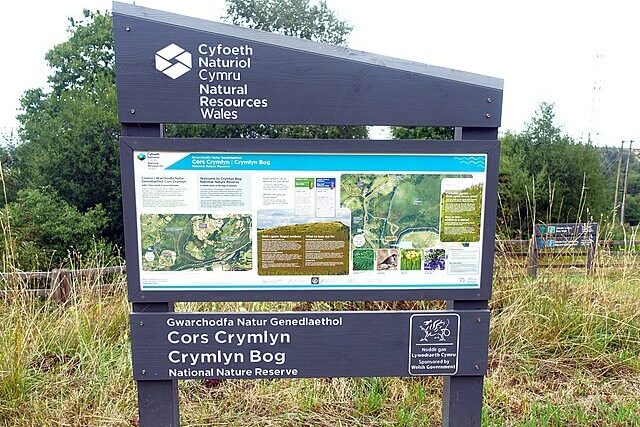
Wales has achieved a groundbreaking milestone in insect conservation, pioneering the world’s first comprehensive mapping of its most critical areas for these vital creatures.
Over a span of five years, a meticulous project meticulously analysed an extensive dataset of 45 million records meticulously collected by naturalists, pinpointing key sites essential for insect survival.
The backdrop to this endeavour is alarming, with Wales experiencing “drastic declines” in insect populations in recent decades, according to the esteemed charity Buglife.
This concerning trend isn’t unique to Wales; it’s a global phenomenon. Nonetheless, Wales now stands at the forefront of proactive conservation efforts with this pioneering initiative.
Wales boasts a rich diversity of invertebrate species, totalling over 20,000 distinct types.
The outcome of the project identified 17 designated Important Invertebrate Areas (IIAs) across Wales, spanning 1,344 square kilometres, which accounts for 6.5% of the country’s territory.
These areas serve as crucial habitats for more than 10,800 species, including 350 flagged as “of conservation concern,” with 15 teetering on the brink of extinction.
Among these endangered species is the cliff mason bee, an exclusive inhabitant of two isolated stretches of clifftops on the Llŷn Peninsula in northwest Wales.
Similarly, the scarce yellow sally stonefly, once thought extinct, has found refuge solely along the River Dee in the northeast.
While not officially designated conservation areas, IIAs hold significant importance, spotlighting regions of paramount importance for both national and international invertebrate populations and their habitats. A panel of experts, leveraging data from 80 national invertebrate recording schemes, determines these areas.
The meticulous mapping of IIAs involves collaboration with local naturalists to identify key species, assess threats, and explore opportunities for landscape enhancement.
Crymlyn Bog, situated on the outskirts of Swansea, exemplifies the biodiversity harboured within these areas. Here, one can encounter the fen raft spider, a remarkable semi-aquatic species known for its unique ability to walk on water, facilitated by its hairy and highly sensitive legs.
Clare Dinham, Buglife’s Wales manager, lauds the initiative, expressing hope that the newly generated maps will foster public awareness and appreciation of local wildlife.
Additionally, she underscores the practical utility of this information for wildlife charities, Natural Resources Wales (NRW), and local authorities in charting conservation strategies and guiding land-use decisions.
“Overall invertebrates are in decline, which is a huge concern – they’re a key part of the food chain for a wide variety of wildlife, they’re essential in pollination, healthy soils and water – so they’re so important to us as humans,” she said.
Looking forward, Jamie Robins, Buglife’s Programs Manager, emphasises that the mapping of IIAs in Wales represents just the inception of a broader conservation journey.
“We need decision makers to recognise the important role that invertebrates play and use our IIAs to prioritise much needed conservation action,” he said.
Crymlyn Bog stands as a testament to ongoing efforts, hosting a five-year peatland restoration project spearheaded by NRW, backed by funding from the EU and Welsh government.
This initiative targets the restoration of quaking bogs and other peatland landscapes, recognized for their pivotal role in combating climate change by absorbing and storing carbon dioxide.
Mark Bond, the scheme’s communication and engagement officer, underscores the urgency, citing that 90% of Wales’ peatlands currently languish in an unsatisfactory state, necessitating immediate intervention.
“Through addressing the hydrology and removing invasive plants, we will hopefully be able to promote the healthy growth of the peatland which is then home to incredible species like the fen raft spider,” he said.
——————————————————————————
At Natural World Fund, we are passionate about stopping the decline in our wildlife.
The decline in our wildlife is shocking and frightening. Without much more support, many of the animals we know and love will continue in their decline towards extinction.
When you help to restore a patch of degraded land through rewilding to forests, meadows, or wetlands, you have a massive impact on the biodiversity at a local level. You give animals a home and food that they otherwise would not have had, and it has a positive snowball effect on the food chain.
We are convinced that this is much better for the UK than growing lots of fast-growing coniferous trees, solely to remove carbon, that don’t actually help our animals to thrive.
This is why we stand for restoring nature in the UK through responsible rewilding. For us, it is the right thing to do. Let’s do what’s right for nature!
Donate today at https://naturalworldfund.com/ and join in the solution!

